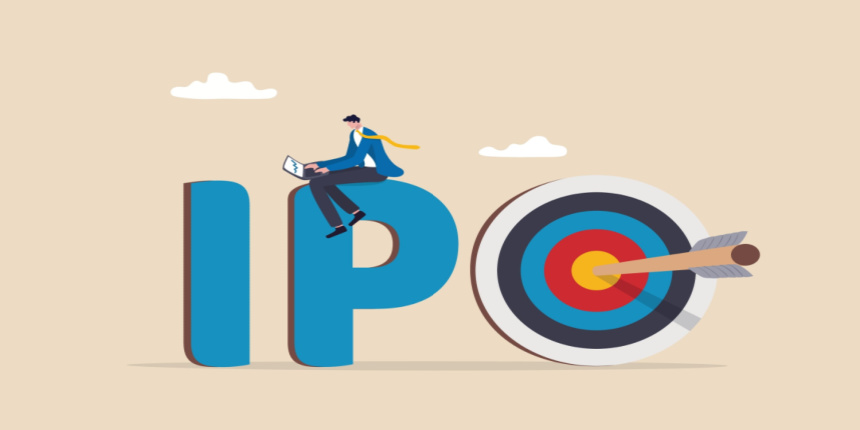IPO Full Form
What is the full form of IPO?
The full form of IPO is the Initial Public Offering. it is a process of converting a privately- held company into a public company, and this process also creates a very good opportunity for investors to earn a good return on their investment. It's very important to understand the basics of an IPO before investing in it because risk and benefits go hand in hand. An IPO is generally launched to infuse new equity capital into the company. After the IPO, shares of the company are listed and can be traded freely in the open market.
- What is the full form of IPO?
- What is an IPO?
- Types of IPO
- IPO Process
- Steps of IPO Process
- Advantages of IPO
- Disadvantages of IPO

What is an IPO?
An IPO is an initial public offering, which is defined as the process of offering shares of a private stock exchange to the public in the new stock exchange.
Types of IPO
Generally, there are two types of IPOs. The two types of IPOs are explained below:
- Fixed price issue: In fixed price issues, the company and its underwriter evaluate the price of offerings. They examine the company's liabilities, assets, and very minute financial aspects.
- Book building issue: There is no fixed price, but it has a range of prices. The lowest price is called the floor price and the higher price is called the cap price.
IPO Process
The process is made up of two parts: pre-marketing and an initial public offering. When a company has an interest in an IPO, it will either advertise to underwriters or make a public statement to induce interest. The underwriters are chosen by the company and lead the IPO. The company may choose one or more underwriters to manage different parts of the IPO process.
Steps of IPO Process
There are many steps in the IPO process. Some of the steps are explained below:
Proposal: In this step, underwriters offer their proposal, which includes valuations referring to their services, offering, price, amount of shares, and estimated time frame for the market offering.
Underwriter: Then, after the proposal, the company chooses its underwriter and decides to underwrite the terms through an underwriting agreement.
Team: IPO teams are formed, and this team is made up of underwriters, lawyers, and certified public accountants.
Documentation: Company information is compiled for required IPO documentation.
Marketing and updates: it is the fifth step of the IPO process, where marketing materials are created for the pre-marketing of the new stock issuance.
Board and process: After they form a board of directors and ensure the process of reporting auditable financial and accounting year information.
Shares issued: The company provides its shares on the IPO date. Capital is received as cash from primary issuance to shareholders and recorded as stockholders' equity on the balance sheet.
Post - IPO: Some of these post-IPO provisions are instituted. A specified time frame may be there to buy an additional amount to underwriters after the initial public date offering.
Advantages of IPO
There are many advantages of an IPO. Some of the advantages are explained below:
One of the important advantages of an IPO is that companies get access to advantages from the full investing public to raise capital.
This also allows for easier acquisition deals and also increases prestige, company exposure, and public image, all of which will help the company's profits and sales.
It also increases transparency, which helps a company to receive more favorable credit borrowing terms than a private company.
Disadvantages of IPO
In the previous paragraph, we discussed various advantages of an IPO, but there are also some disadvantages too along with the advantages. These disadvantages are mentioned below:
IPOs are very expensive. Initial public offerings may be expensive.
And sometimes the founders lose control of their company, although there are some ways in which founders retain maximum decision-making power in the company. Once the company becomes public, it is now the responsibility of the owner of the company to act according to the stakeholder, even if the founder of the company dislikes it.
Market pressure can be very tough on the company's leadership, which used to feel that what they are doing is best for the company. Founders who do not want to be constrained by short-term public goals should think carefully about going public.
Other Related Full Forms -
Frequently Asked Questions (FAQs)
IPO connotes the first time a personally owned venture decides to index its share on the market for the deal to the general public. Whereas regular stock investment indicates the issue of fresh shares by a firm that is already being listed on the stock exchange.
Yes, you can apply for an IPO through your bank account or trading account.
No, you can't sell an IPO immediately. You can sell an IPO only after the opening of the market, which usually opens on listing day.
IPO allows companies to increase their capital by selling more and more shares.
22 billion U.S dollars is the largest IPO of Alibaba Group Holding Limited to date in America.

